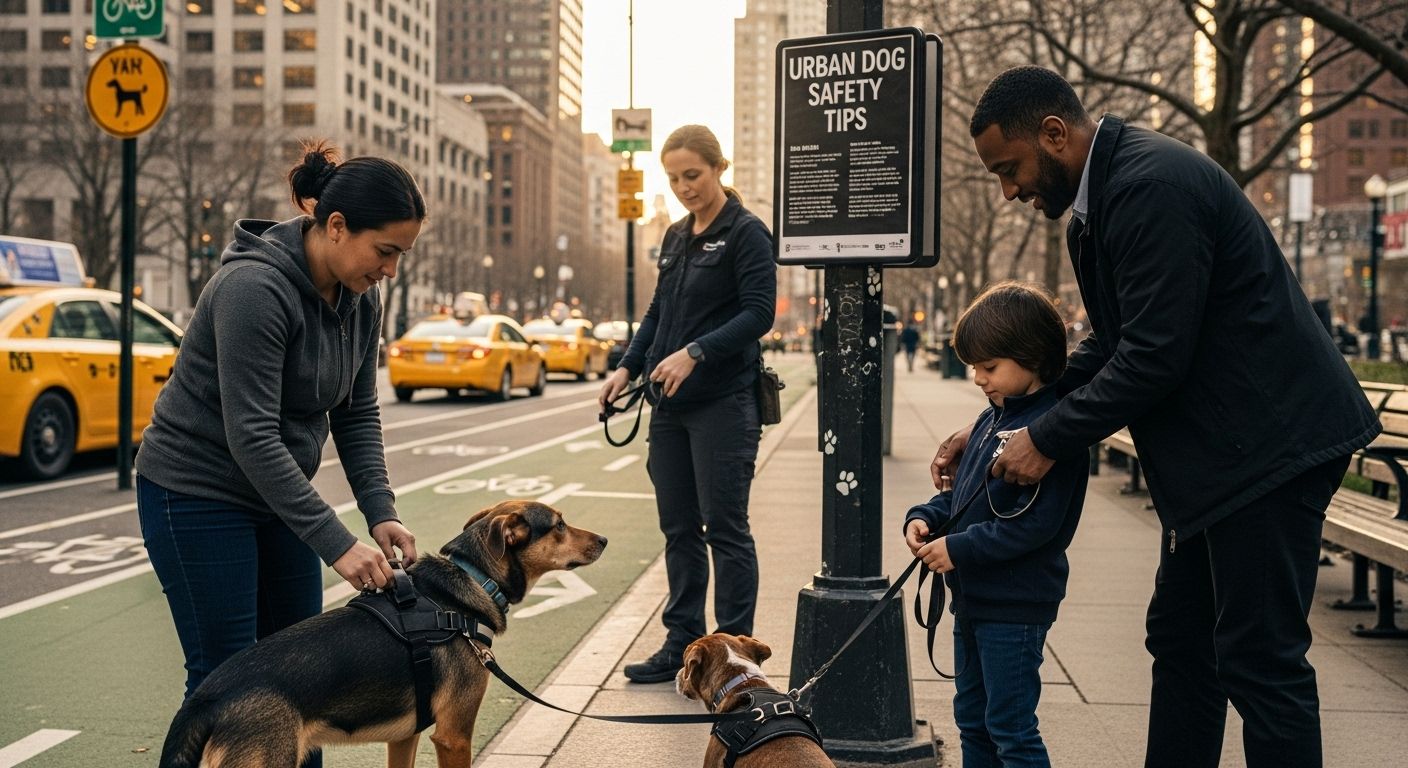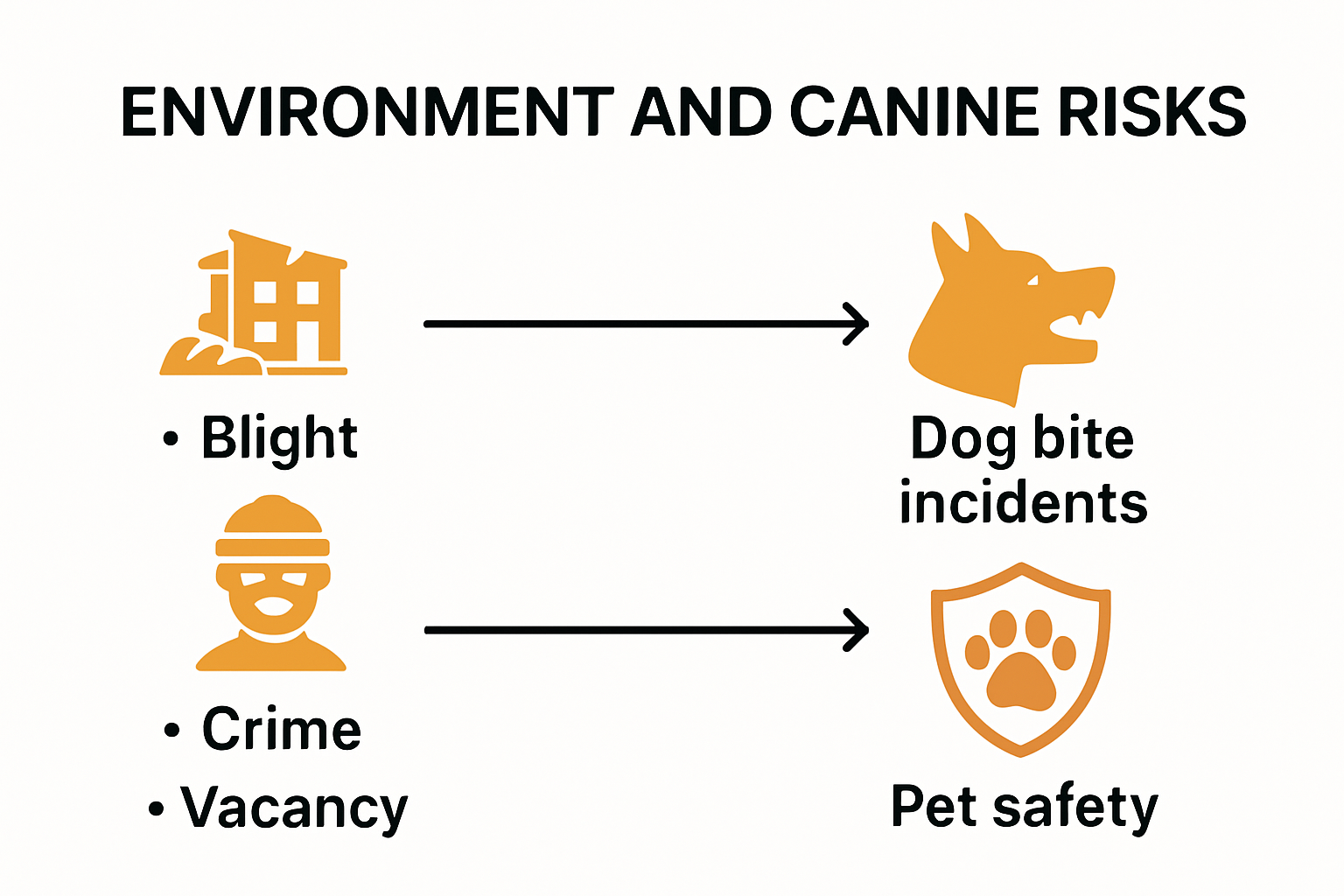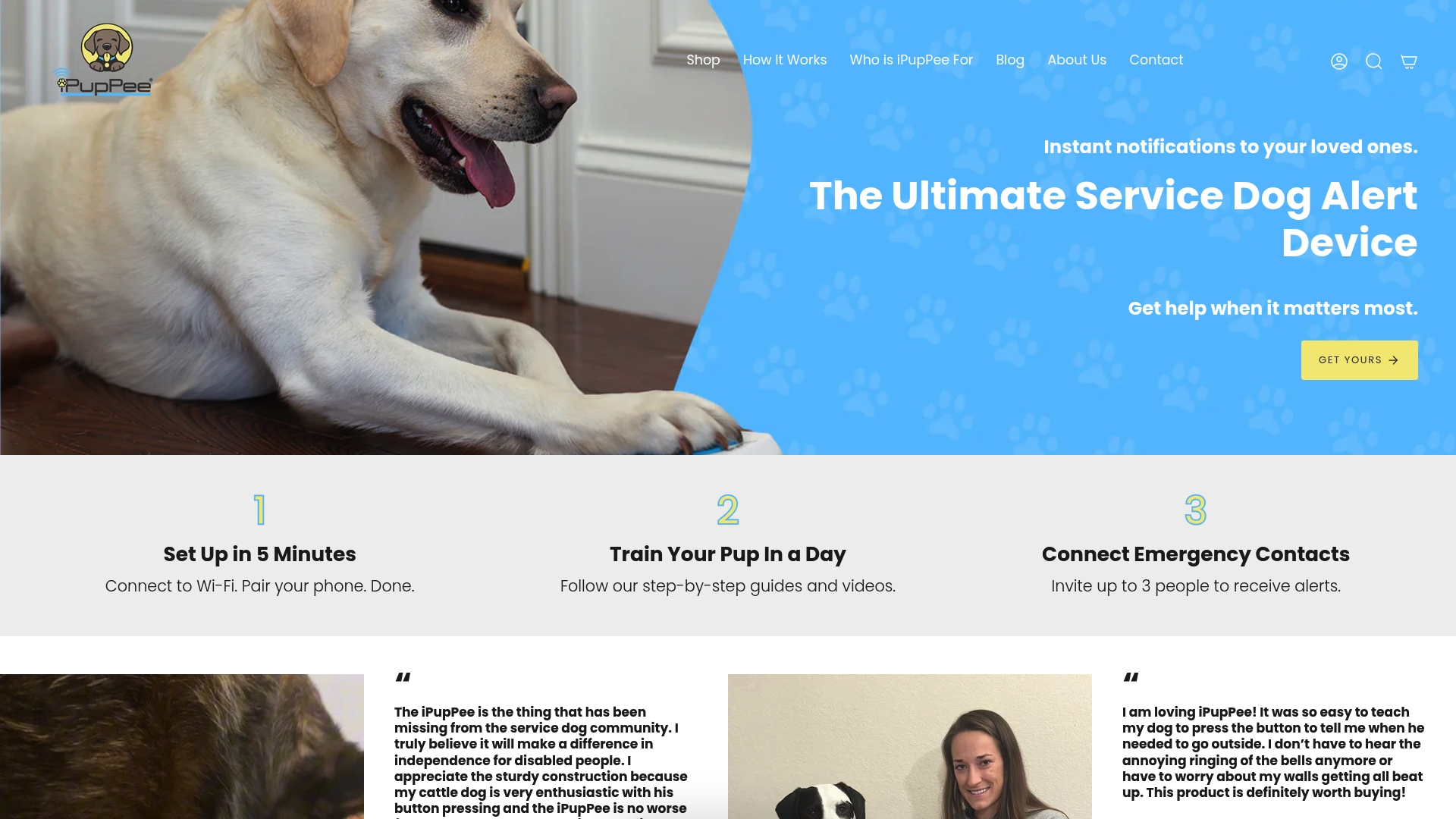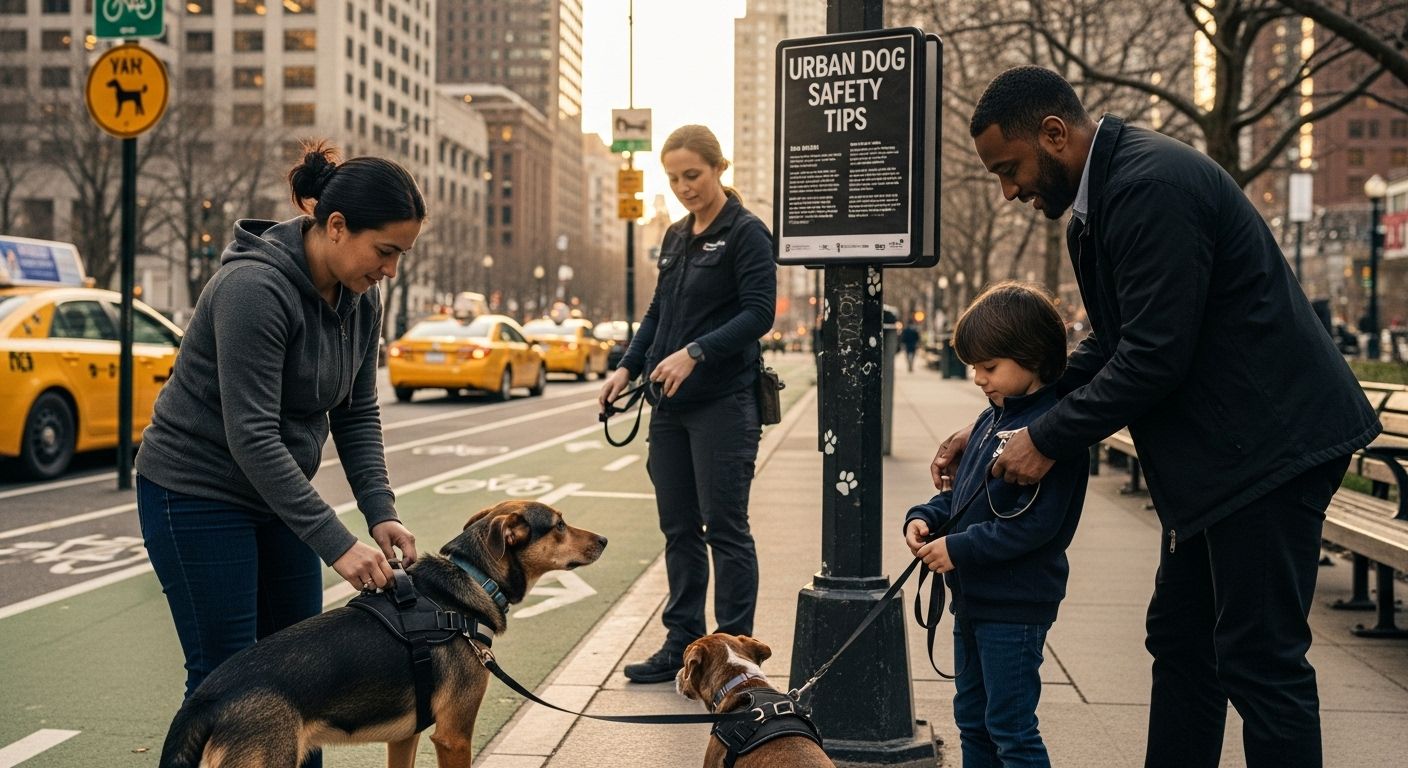
City life looks exciting for dogs at first glance, with endless smells and constant motion everywhere you turn. Yet urban environments hide some shocking dangers, like rat poison and toxic substances, which are far more common in city neighborhoods than most owners realize. But here is the real surprise. The most powerful way to protect your dog in the city is not just about gear or commands. It is about spotting hidden risks that most people never see and building the kind of routine that keeps your pet safe at every turn.
Table of Contents
- Recognizing City Hazards For Dogs
- Safe Walking And Traveling In Urban Areas
- Creating A Calm Home For City Dogs
- Community Resources For Urban Pet Safety
Quick Summary
| Takeaway | Explanation |
|---|---|
| Identify urban hazards for dogs. | Be aware of dangers like toxic substances and urban infrastructure that can harm your pet. |
| Use proper walking equipment. | Equip your dog with a sturdy leash and harness for better control in busy urban settings. |
| Train your dog for urban navigation. | Teach critical commands like ‘heel’ and ‘leave it’ to enhance safety during city walks. |
| Create a calm home environment. | Designate quiet spaces for your dog to retreat, reducing exposure to city noise and stress. |
| Engage with community resources. | Connect with local safety networks and programs to enhance pet safety and emergency preparedness. |
Recognizing City Hazards for Dogs
Urban environments present unique challenges for dogs that require vigilant awareness and proactive safety strategies. Cities are complex ecosystems filled with potential risks that can quickly turn a routine walk into a dangerous situation. Understanding these hazards helps dog owners protect their four-legged companions from unexpected threats.
Hidden Urban Dangers for Canines
City streets are more than just concrete and asphalt. They represent a complex network of potential risks for dogs. The Animal Medical Center highlights several critical urban hazards, including mechanical dangers like revolving doors, escalators, and elevators that can trap or injure unsuspecting pets. These seemingly innocuous spaces require careful navigation and constant supervision.
Rat poison represents another significant urban threat. Cities often have dense rodent populations, leading property owners and municipalities to deploy toxic substances. Dogs can accidentally ingest these chemicals through curious exploration or by consuming contaminated rodents. The consequences can be devastating, potentially causing severe internal bleeding or neurological damage.
Environmental and Behavioral Risks

Research published in the Journal of the American Veterinary Medical Association reveals a startling connection between urban environmental factors and dog safety. Their study demonstrated that neighborhood characteristics like blight, crime rates, and property vacancy directly correlate with increased dog bite incidents. This research underscores the importance of understanding not just physical hazards, but also the complex social dynamics of urban spaces.
Urban wildlife presents another layer of complexity. The City and County of Denver’s wildlife guidelines emphasize the potential dangers of interactions with urban wildlife, particularly coyotes. These encounters can quickly escalate, especially if dogs are not properly trained or controlled. The key is prevention through awareness and proper training.
Proactive Safety Strategies
Recognizing city hazards requires a multifaceted approach. Dog owners must develop keen situational awareness, understanding that urban environments are dynamic and unpredictable. This means constant vigilance during walks, avoiding known high-risk areas, and maintaining strict leash control. Learn more about comprehensive dog safety techniques in our guide.
Additionally, owners should invest time in training their dogs to respond to critical commands like “stay,” “come,” and “leave it.” These commands can be literal lifesavers in urban environments where split-second decisions can prevent potential accidents or dangerous encounters.
Understanding and preparing for urban hazards is not about creating fear but fostering a sense of preparedness. By acknowledging the unique challenges of city living, dog owners can create safer, more enjoyable experiences for their canine companions.
To help clarify the key differences between various urban hazards for dogs, the following table summarizes the primary risks discussed above.
| Urban Hazard | Type (Physical/Environmental/Behavioral) | Example Risks |
|---|---|---|
| Toxic Substances (e.g., rat poison) | Physical/Environmental | Accidental ingestion, internal bleeding, neurological damage |
| Mechanical Dangers | Physical | Injury from escalators, elevators, revolving doors |
| Urban Wildlife | Environmental/Behavioral | Encounters with coyotes or other wildlife, leading to aggressive events |
| Neighborhood Crime/Blight | Environmental/Behavioral | Increased likelihood of dog bite incidents |
| Property Vacancy | Environmental | Unsafe abandoned areas, more stray animals |
Safe Walking and Traveling in Urban Areas
Navigating urban environments with a dog requires strategic planning, advanced training, and consistent safety practices. City streets present complex challenges that demand more than casual awareness from responsible pet owners.
Essential Urban Walking Equipment and Techniques
VCA Animal Hospitals emphasize the critical importance of using proper walking equipment. A sturdy 46-inch leash connected to a well-fitted harness provides optimal control in busy urban settings. Retractable leashes become dangerous in high-traffic areas, limiting an owner’s ability to quickly manage unexpected situations.
Choosing the right walking gear involves more than aesthetics. Dog owners must consider temperature and surface conditions. Sidewalks and asphalt can reach scorching temperatures that quickly damage sensitive paw pads. Carrying portable water, protective booties, and selecting walking times during cooler parts of the day can prevent painful burns and potential injuries.
Advanced Urban Dog Training
The American Kennel Club recommends specific training techniques for urban navigation. Teaching fundamental commands like ‘heel,’ ‘wait,’ and ‘leave it’ transforms city walks from potential hazards to controlled, enjoyable experiences. The ‘heel’ command ensures your dog walks closely beside you, preventing sudden movements into traffic or crowded spaces.
Crosswalks and doorways require particular attention. Training your dog to automatically stop and wait for your signal can prevent dangerous street crossings or unexpected entries into potentially risky indoor spaces. The ‘leave it’ command becomes crucial in urban environments where discarded food, chemicals, or other hazardous materials might attract a curious canine.
Navigating Specific Urban Challenges
The Animal Medical Center warns about unique urban infrastructure risks, including mechanical dangers like revolving doors, escalators, and potential ‘high-rise syndrome’ from open windows. These seemingly mundane urban features can pose significant threats to unsuspecting dogs.
Public transportation and crowded spaces demand additional preparation. Small dogs should be carried in secure bags or carriers, while larger dogs need extensive training to remain calm and controlled. Check out our comprehensive guide on urban dog safety techniques to learn advanced strategies for managing these challenging environments.
Successful urban dog walking is a combination of proper equipment, consistent training, and situational awareness. By investing time in preparation and understanding potential risks, dog owners can transform city streets from intimidating landscapes into safe, enjoyable spaces for exploration and bonding.
Here’s a comparison table summarizing recommended urban walking equipment and their safety benefits for city dogs:
| Equipment | Recommended? | Urban Safety Benefit |
|---|---|---|
| 46-inch sturdy leash | Yes | Maximum control; prevents sudden movements in crowds |
| Retractable leash | No | Dangerous in traffic; limits emergency response |
| Well-fitted harness | Yes | Distributes pulling force; enhances owner control |
| Protective booties | Yes | Shields paws from hot pavement and glass debris |
| Portable water bottle | Yes | Prevents dehydration during city walks |
Creating a Calm Home for City Dogs
Urban living presents unique challenges for dogs, making it crucial to design a home environment that promotes relaxation and reduces stress. City dogs experience more sensory stimulation and potential anxiety compared to their suburban or rural counterparts, requiring intentional strategies to create a peaceful sanctuary.
Designing a Safe and Soothing Space
The Northern Ireland government emphasizes the importance of providing dogs with a safe, comfortable, and quiet resting area. In urban settings, this means creating dedicated spaces where dogs can retreat from the constant noise and activity of city life. Consider establishing a specific corner or room with comfortable bedding, minimal external stimuli, and a sense of security.
Sound management becomes critical in urban environments. City dogs are constantly exposed to street noise, construction sounds, and neighbor activities. Implementing sound-dampening techniques like heavy curtains, white noise machines, or calming music can significantly reduce auditory stress. Some dogs respond particularly well to classical music or specially designed soundtracks that promote relaxation.
Stress Reduction and Mental Enrichment
The San Diego Humane Society recommends creating ‘success stations’ that help dogs learn to remain calm. These areas might include crates or playpens where dogs can decompress without external interruptions. Training your dog to view these spaces as positive, peaceful retreats involves consistent positive reinforcement and making the area attractive with comfortable bedding and occasional treats.
Mental stimulation is equally important for urban dogs who may have limited outdoor exploration opportunities. Interactive toys, puzzle feeders, and controlled training sessions can help channel energy and reduce anxiety. Short, focused mental exercises can be more exhausting and satisfying for dogs than prolonged physical activity, especially in confined urban spaces.
Sensory Enrichment and Stress Management
The ASPCA suggests that sensory experiences can significantly reduce stress in dogs. While creating an entire sensory garden might be challenging in a city apartment, you can incorporate similar principles. Introduce varied textures through different types of bedding, provide safe chew toys with interesting surfaces, and occasionally use calming scents like lavender.
Regular routines are fundamental in creating a sense of security. Consistent feeding times, walk schedules, and quiet periods help urban dogs predict and understand their environment. Learn more about establishing effective home safety routines in our comprehensive guide.
Creating a calm home for a city dog is an ongoing process of understanding your pet’s individual needs. Each dog responds differently to urban stimuli, so patience and observation are key. By thoughtfully designing their environment and providing consistent support, you can transform a potentially stressful city living situation into a comfortable, secure home for your canine companion.
Community Resources for Urban Pet Safety
Urban environments demand collaborative approaches to pet safety, requiring engagement from multiple community stakeholders. Successful pet protection goes beyond individual efforts and necessitates comprehensive support systems that address diverse urban challenges.
Local Safety Networks and Emergency Preparedness
The ASPCA emphasizes the critical importance of developing safe community resources for pets, highlighting the need for coordinated emergency planning. City residents should identify and connect with local veterinary clinics, animal control centers, and emergency shelters that offer specialized services for urban pets.
Establishing a neighborhood pet safety network can dramatically improve response times during emergencies. This might involve creating group communication channels, sharing contact information for local veterinarians, and developing mutual support systems for pet care during unexpected situations like natural disasters or sudden health emergencies.
Municipal Support and Educational Programs
Many urban areas now offer specialized programs designed to enhance pet safety. These typically include free or low-cost vaccination clinics, microchipping services, and community training workshops. Animal control departments frequently provide educational resources about responsible pet ownership, leash laws, and bite prevention strategies.
Public libraries and community centers increasingly host workshops focusing on urban pet safety. These sessions cover critical topics like recognizing aggressive animal behaviors, understanding local regulations, and learning basic first aid techniques for pets. Explore our comprehensive guide to urban pet safety strategies to complement these community resources.
Technology and Community Collaboration

Digital platforms have transformed how urban communities approach pet safety. Neighborhood apps and social media groups now facilitate rapid communication about lost pets, potential hazards, and emergency veterinary services. Many cities have developed specialized mobile applications that map dog-friendly spaces, track local animal health alerts, and provide immediate connection to municipal animal services.
Local pet stores, veterinary clinics, and animal welfare organizations often collaborate to create comprehensive safety networks. These partnerships can include joint vaccination events, community training sessions, and shared emergency response protocols. Some urban areas have developed sophisticated tracking systems that help reunite lost pets with their owners quickly and efficiently.
Building a robust urban pet safety ecosystem requires active participation from every community member. By leveraging local resources, embracing technology, and maintaining open communication channels, city residents can create safer, more supportive environments for their animal companions. The most effective pet safety strategies emerge from collective effort, shared knowledge, and a genuine commitment to animal welfare.
Frequently Asked Questions
What are some common hazards for dogs in urban areas?
Urban environments pose several hazards for dogs, including toxic substances like rat poison, mechanical dangers from escalators and revolving doors, and risks associated with encounters with urban wildlife such as coyotes. Understanding these dangers is crucial for keeping your pet safe.
How can I ensure my dog is safe while walking in the city?
To ensure your dog’s safety while walking in the city, use a sturdy leash and harness for better control, teach critical commands like ‘heel’ and ‘leave it’, and remain vigilant for potential hazards such as traffic and discarded food that could be harmful.
What is the best type of equipment for urban dog walking?
The best equipment for urban dog walking includes a 46-inch sturdy leash and a well-fitting harness, which provides optimum control. Avoid using retractable leashes in busy areas as they can limit your ability to respond quickly in emergencies.
How can I create a calm home environment for my city dog?
Creating a calm home for your city dog involves designing a soothing space with minimal external noise, implementing sound-dampening techniques, providing mental enrichment with interactive toys, and establishing consistent routines to reduce anxiety.
Transform City Walks Into Safer Experiences With Smart Dog Communication
Are you worried about the unpredictable risks your dog faces in the city? From toxic substances to loud noises and sudden emergencies, urban life can be stressful for both you and your pet. The article highlights the constant need for vigilant safety routines, especially when split-second decisions can make all the difference. Craving more confidence when navigating busy sidewalks or leaving your dog at home? The right communication device can bring peace of mind and add a crucial layer of safety to your daily routine.

Take charge of your dog’s safety and independence today with the innovative iPupPee alert system. This unique device lets your dog instantly communicate with you or others by pressing a simple button, giving you an extra safeguard both inside your home and during city walks. Whether you want to support service dog needs, enhance communication with a rescue, or simply add security for seniors and new puppy owners, visit our main site at https://ipuppee.com to discover how smarter communication leads to safer, happier urban adventures. Explore our customer testimonials and detailed product info to understand why proactive pet owners trust iPupPee. Do not wait for a close call. Empower your dog’s safety now.
Recommended
-
[
Top Safety Tips for Dog Owners: Essential Guidance for 2025
– iPupPee](https://ipuppee.com/blogs/news/safety-tips-for-dog-owners)
-
[
How to Improve Dog Safety at Home and Outdoors 2025
– iPupPee -
[
The Importance of Dog Safety: What Every Owner Should Know in 2025
– iPupPee](https://ipuppee.com/blogs/news/importance-of-dog-safety-what-every-owner-should-know-2025)
-
[
Winter Safety for Your Dog: Tips to Keep Your Furry Friend Safe and Wa
– iPupPee -
Pet Care When on Vacation: Best Tips for 2025 - Pet Care with Love

